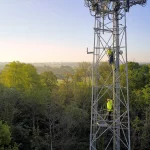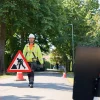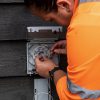Boris Johnson Splurges £5bn on UK 2025 Gigabit Broadband Target UPDATE3
The Prime Minister of the United Kingdom, Boris Johnson, is this week expected to commit £5bn of public funding in order to support his seemingly now watered down ambition to have “Gigabit broadband sprouting in every home” by the end of 2025 (full fibre, cable broadband, 5G etc.).
According to the Telegraph‘s (paywall) many sources, Boris could announce the investment as part of the Conservative Party Conference in Manchester this week and the funding will be targeted at the most remote rural areas (i.e. an outside-in approach to deployment). The same sources also cautioned that the date of this announcement had not yet been set in stone and could change.
We were originally expecting a pile of new public funding to be unveiled as part of the imminent National Infrastructure Strategy (NIS), although given the current political climate and the fact that all of the parties seem to be gearing up for a snap 2019 General Election before Christmas (due to the on-going Brexit chaos), then such plans may well have changed.
Advertisement
The proposed level of investment is consistent with the upper end of a prediction in last year’s Future Telecoms Infrastructure Review (FTIR), which stated that the final c.20% of the country is “likely to require bespoke solutions to ensure rollout of networks.” The FTIR added that nationwide availability of full fibre (FTTP) would require “additional funding” of around £3bn to £5bn to support commercial investment in the final c.10% of areas, although that was for the original 2033 completion aspiration and not Boris’s 2025.
However we reported two weeks ago that the Government appears to have watered down Boris’s original “full fibre” for all ambition to adopt “Gigabit-capable” language instead (here); this allows him to include hybrid fibre networks like Virgin Media and also 5G mobile. At present some 9% of premises can access full fibre but if you change the language to “gigabit” then, allowing for Virgin Media’s 1Gbps DOCSIS 3.1 upgrade (here), you’d probably be able to say around 55% with just the click of your fingers. The gap is quickly made much smaller.
The above target is thus more plausible than the old one but there still isn’t a magic fix for tackling the final 40-50% of premises in the space of just 5 years (mix of urban and rural, albeit slower to reach and more expensive). You have to allow time for the usual legislative changes, consultations, more consultations, Open Market Reviews (OMR), local procurements and then engineering surveys before work can even begin. This can take up to 2 years or more, much as it did with the original BDUK framework.
As such Boris will need to pull a pretty big rabbit from his hat and we’re keen to see what that looks like. On the other hand it raises the question of when we can now expect every home to get access to a full fibre service or if that aspect has now been totally abandoned too (a report last week suggested that this target might be pushed back by a few years beyond 2025, albeit perhaps not all the way back to 2033).
Advertisement
Likewise there will still be a question mark over which operators can deliver for the new investment, since the rush to hit 2025 means that there aren’t currently many Gigabit-capable broadband builders with an ability to deploy at such a huge scale in remote rural areas (not without significant risk – the Gigaclear example shows precisely what happens when smaller fish try to scale-up too far, too quickly). Not forgetting the issue of engineer shortages – many more will be needed and in a short space of time, but operator’s often won’t fully invest in that until after contracts are secured.
The aforementioned situation means that BT (Openreach), and possibly Virgin Media’s proposed alternative network ISP spin-off (here and here), are likely to be seen as the primary contenders for such contracts. No doubt they’ll use that as a bargaining chip, although it may also raise competition issues (e.g. crowding out a fledgling but growing market of smaller full fibre ISPs and potentially being perceived as enabling BT to rebuild its monopoly).
The heavily regulated Openreach has also previously called for rival full fibre networks to open up access to their infrastructure (i.e. sharing access to help focus on improving coverage), which is arguably akin to asking their already smaller rivals to further weaken their position (i.e. altnets may see going open access as a devaluation of the investment they’ve made and often privately, without state aid support like BT). Getting ISPs to agree on such things is often akin to herding angry cats.
As ever the devil will be in the detail and the fog of a looming General Election tends to cloud the rays of pragmatic reality with big, albeit not always deliverable, promises. On the bright side it’ll be lovely to see political parties doing battle over who can commit the most to making national Gigabit-capable or full fibre broadband a reality.
Advertisement
Meanwhile consumers may be less concerned about how Gigabit speeds reach them, just so long as those speeds are actually possible.
UPDATE 30th September 2019 – 7:31am
The £5bn pledge has been confirmed, although we’ve tweaked the language above a little because this funding is now also said to include 5G mobile services, alongside full fibre and Virgin Media’s coax, under the “gigabit-capable” box. Nicky Morgan MP said: “We want everyone in the UK to benefit from world-class gigabit connectivity no matter where they live or work, so today @Conservatives are announcing £5bn to ensure our rural communities benefit too.”
The inclusion of 5G is a tricky one because mobile broadband performance is highly variable and while some may eventually get 1Gbps or more, others on 5G won’t even come close.. at not least for awhile (e.g. particularly those in rural areas where lower frequency mobile bands tend to be more common due to the focus on maximising coverage).
Sajid Javid MP, Chancellor of the Exchequer, will say:
“Investment in our infrastructure will be key to making the next decade one of renewal – boosting our economy and making life easier for people all across the country.
This new multi-billion pound investment to deliver gigabit-capable broadband for all the UK and investment in roads and buses will help people to get around and businesses to grow, ensuring no community is left behind.
This will make the UK a better place to live and work, extending opportunity and raising living standards for all.”
Apparently the new funding will be used to help those in the final 20% of premises, rather than just the final 10%. The proposed £5bn is all new money, which means that it is in addition to the existing investments for full fibre (no mention of if this includes existing 5G investment). “This is in addition to the £650 million we have already invested in fibre rollout in the three years to 2021, where we are prioritising rural areas,” added Nicky Morgan.
UPDATE 30th Sept – 4:11pm
We’ve had a few responses from other organisations to this news.
A Spokesperson for the ISPA said:
“Sajid Javid’s announcement of £5bn for the rollout of full fibre and gigabit capable broadband is welcomed. We agree with its focus on targeting rural areas as a priority, but the calculation for this £5bn of funding was estimated using the 2033 target, not the updated 2025 ambition.
Considering this level of funding has not taken into account the new 2025 ambition, this puts an even stronger emphasis for the Government to now combine this funding with urgent regulatory reform to the sector. This increased funding can be spent far more efficiently if the Government also considered immediate reform to the fibre tax and to bring in wayleaves legislation. Without these regulatory changes there will still be the same barriers that are already preventing industry from accelerating the rollout of full fibre and gigabit capable broadband.”
Tim Breitmeyer, President of the Country Land and Business Association, said:
“Better connectivity is key to unleashing the economic potential of the countryside, and we welcome that Government is listening to the concerns of rural communities.
Ending the rural/urban digital divide will support rural businesses to create jobs, enable people to access services, allow agriculture to embrace the technological revolution and persuade more tourists to visit. What’s needed now is for the ambitions of this announcement to be matched by detailed and technical work with broadband providers and mobile operators to turn this into a reality, but we are on the verge of overcoming one of the largest barriers to the rural economy becoming an engine for growth and productivity.”
Truespeed CEO, Evan Wienburg, said:
“This afternoon at the Conservative Party Conference Chancellor Sajid Javid talked about kick-starting an infrastructure revolution and announced an extra £5bn for accelerating gigabit broadband deployments in the hardest to reach rural areas.
Of course we welcome this public investment in the UK’s critical digital infrastructure. But the devil is in the detail: we need to understand just where and how the £5bn is going to be spent.
We’re hoping it’s going to support a wide range of mechanisms and processes to support what this country needs. The initiative must protect the independent providers that are working to connect previously ignored areas – and must not encourage wasteful overbuilding.
We urge the government to move quickly to avoid the UK slipping even further behind other Western European nations in gigabit broadband roll-outs.”
Greg Mesch, CEO of CityFibre, said:
“We welcome the funding announced today for full fibre rollout in the most rural 20% of the UK. CityFibre, with a commitment to build full fibre to 5m properties by 2025, shares the Chancellor’s aim of levelling up the country as part of an infrastructure revolution.
It’s vital the whole of the UK benefits from transformative connectivity and no-one is left behind. To do this we must maximise coverage by minimising duplication. This is where the Government can play a vital role, helping industry to be as transparent as possible about build plans, and by ensuring access to Openreach’s ducts and poles is fit for purpose.”
Richard Tang, Zen Founder & Chairman, said:
“The Government set out its ambitious plans to connect Britain to full fibre broadband by 2025 earlier this year, and the £5bn investment will go a long way to help drive connectivity and productivity in Britain.
Now it is time to turn policy into action. The Government must deliver on its intentions and pave the way for world-leading connectivity – addressing the taxation of fibre cables, the ease of laying infrastructure and tackling a national skills shortage. These are critical ingredients for the success of the UK economy in an era where fast, reliable, robust connectivity is an absolute must.”
Separately we understand that any new investments and delivery plans through the £5bn will be expected to align with ongoing work, such as the contracts being delivered through the Superfast Programme, projects across the Devolved Nations (R100 in Scotland, Project Stratum in N.Ireland and Superfast Cymru in Wales) as well as the Rural Gigabit Connectivity programme (RGC) etc.
We did ask DCMS what all this meant for the original full fibre specific rollout time-scale and they could only respond by talking about gigabit-capable again, which didn’t answer our question. However it’s fair to say that in some areas there may be instances where the geographical challenges are so great that providing gigabit-connectivity through alternative solutions (e.g. wireless) is the only way to do it.
UPDATE 2nd October 2019
Clearly not everybody in Government, which seems to have confused some of its own ministers with the recent change in language, is on message yet about the adoption of “gigabit-capable” broadband over “full fibre“. Yesterday the Conservative MP, Simon Clarke, responded to a broadband centric question about small business connectivity by re-stating the old pledge.
Simon Clarke MP said:
“My right hon. Friend is of course absolutely right that broadband connectivity lies at the heart of a modern economy. It was so welcome to hear my right hon. Friend the Chancellor of the Exchequer yesterday set out how £5 billion of investment is going to be devoted to making sure that we can deliver on the Prime Minister’s pledge to ensure full fibre broadband access by 2025.”
Meanwhile the Chancellor, Sajid Javid MP, appeared to agree with a suggestion that the funding should be distributed to local authorities rather than central Government’s (Scotland, Wales etc.) in order to reduce delays with its use. “The investment that I announced yesterday is hugely important for the entire country, including Scotland. My hon. Friend is right to point to the abysmal record of the Scottish Government in delivering broadband for their people, so we should certainly look at whether there is a much better way to deliver it,” said Sajid.
Elsewhere we’ve had a comment from Hyperoptic.
Dana Tobak CBE, MD & CEO of Hyperoptic, said:
“We welcome the Government’s ambitions for full-fibre connectivity. Addressing the digital divide is important for individuals, business and the UK economy. With so much of the UK still in a fibre desert, we agree with Government’s approach to locate it’s spending in the most remote areas, while private investors compete in the vast majority of the market.
Over the last eight years we have been investing in growing our own 1Gbps network, which is set to reach five million homes by 2024 and we look forward to sharing our learnings with the government on the skills, investment and deployment conditions required to support the roll-out of fibre networks at scale in the UK.
We firmly believe in the importance of symmetrical speeds with upload and downloads being equally important and look forward to continue leading the charge to Gigabit Britain.”
Mark is a professional technology writer, IT consultant and computer engineer from Dorset (England), he also founded ISPreview in 1999 and enjoys analysing the latest telecoms and broadband developments. Find me on X (Twitter), Mastodon, Facebook, BlueSky, Threads.net and Linkedin.
« Big UK ISPs Accused of Overcharging Customers by up to £236

















































Comments are closed